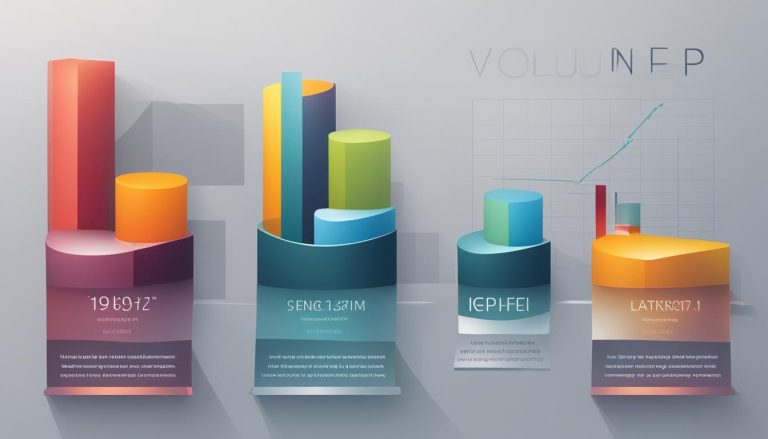As we delve into the fascinating world of quantum computing, one concept that stands out is the quantum gate. In this article, I will demystify the science behind quantum gates and help you understand their significance in quantum computing.
Quantum gates are fundamental building blocks of quantum computing, operating on quantum bits (qubits) rather than classical bits. While they have similarities to classical logic gates, such as AND, OR, and NOT gates, quantum gates have striking differences that stem from the principles of quantum mechanics.
By harnessing the principles of superposition and entanglement, quantum gates enable the manipulation and processing of quantum information. Superposition allows qubits to exist in multiple states simultaneously, while entanglement connects the states of multiple qubits, creating instant correlations.
Represented as matrices, quantum gates perform probabilistic operations that go beyond the deterministic operations of classical logic gates. Understanding quantum gates is crucial for comprehending the potential of quantum computing and the groundbreaking possibilities it offers.
Key Takeaways:
- Quantum gates are fundamental building blocks of quantum computing, operating on qubits rather than classical bits.
- Quantum gates leverage the principles of superposition and entanglement, allowing for the manipulation and processing of quantum information.
- Quantum gates are represented as matrices and perform probabilistic operations.
- Understanding quantum gates is crucial for comprehending the potential of quantum computing.
- Quantum gates have similarities to classical logic gates but also have striking differences due to the principles of quantum mechanics.
Classical vs Quantum Gates: Comparing the Incomparable?
Classical logic gates and quantum logic gates are both types of logic gates, but they operate on different principles. Classical gates manipulate classical bits, representing the 0 and 1 states of information, while quantum gates operate on qubits, which can exist in multiple states simultaneously due to the principle of superposition. This fundamental difference sets quantum gates apart from classical gates and gives quantum computing its unique power.
One of the key concepts in quantum gates is superposition, which allows qubits to be in a state of 0, 1, or both at the same time. This enables quantum gates to process and manipulate a vast amount of information in parallel, exponentially increasing computing power compared to classical gates. Additionally, quantum gates can take advantage of entanglement, a phenomenon that links the states of multiple qubits together. This instant correlation of information across qubits allows quantum gates to perform complex operations efficiently.
While classical gates are deterministic, meaning they produce a definite output based on the input, quantum gates introduce probabilistic operations. This probabilistic nature arises due to the measurement process in quantum mechanics, where the act of measuring collapses the superposition of qubits into one definite state. As a result, quantum gates provide probabilities of different outcomes rather than precise determinations.
| Classical Gates | Quantum Gates |
|---|---|
| Manipulate classical bits (0 and 1) | Operate on qubits that can exist in multiple states simultaneously |
| Produce definite outputs | Provide probabilities of different outcomes |
| Process information sequentially | Process information in parallel, exponentially increasing computing power |
| Cannot achieve entanglement | Can utilize entanglement to link the states of multiple qubits |
In conclusion, classical and quantum gates are fundamentally different in their operations and capabilities. While classical gates manipulate classical bits and provide definite outcomes, quantum gates operate on qubits and leverage superposition and entanglement to exponentially increase computing power. The probabilistic nature of quantum gates introduces new possibilities for information processing. Understanding these distinctions is essential to grasping the potential of quantum computing and harnessing its power for various applications.
V is for Vector: The Role of Matrices in Quantum Gates
Quantum gates, the essential building blocks of quantum computing, rely on the concept of matrices and vectors in quantum mechanics. Matrices, represented as square arrays of numbers, are used to symbolize quantum gates and perform operations on quantum bits (qubits). Vectors, on the other hand, depict the states of qubits and are represented as kets in quantum mechanics.
Matrices in quantum gates serve as transformation tools, changing the state of qubits based on the desired operation. Quantum gates are reversible, meaning they have an undo button and do not lose information. This reversibility is a significant advantage over classical gates found in conventional computers, which can lose information during computation.
“Quantum gates leverage the power of matrices to manipulate qubits, providing a wide range of possibilities for quantum information processing.” – Dr. Quantum
The size of the matrix used in a quantum gate depends on the number of qubits it operates on. For example, a 2-qubit gate would require a 4×4 matrix, while a 3-qubit gate would require an 8×8 matrix. These matrices contain complex numbers that determine the probability amplitudes of the different states of the qubits.
| Quantum Gate | Matrix Representation |
|---|---|
| Hadamard Gate | 1/sqrt(2) * [[1, 1], [1, -1]] |
| CNOT Gate | [[1, 0, 0, 0], [0, 1, 0, 0], [0, 0, 0, 1], [0, 0, 1, 0]] |
| Pauli X-Gate | [[0, 1], [1, 0]] |
Understanding the role of matrices in quantum gates is crucial for grasping the intricacies of quantum computing. Matrices enable the manipulation and processing of quantum information, unlocking the vast potential of quantum computing in solving complex problems.
The Pauli Gates: Simple Yet Powerful Quantum Gates
Quantum computing is propelled by a range of powerful tools known as quantum gates. Among these gates, the Pauli gates stand out as fundamental and versatile components in quantum computing. Named after Wolfgang Pauli, a pioneering physicist, the Pauli gates operate on individual qubits and play a crucial role in manipulating quantum information.
There are three types of Pauli gates: the Pauli X-gate, the Pauli Y-gate, and the Pauli Z-gate. Each gate is represented by a compact matrix and performs specific operations on qubits. For example, the Pauli X-gate acts as a quantum NOT gate, flipping the state of a qubit from 0 to 1, or vice versa. These simple yet powerful gates serve as the building blocks for more complex gate operations in quantum computing.
Table: Comparison of Pauli Gates
| Gate | Description |
|---|---|
| Pauli X-gate | Flips the state of a qubit |
| Pauli Y-gate | Performs a rotation and phase shift |
| Pauli Z-gate | Applies a phase shift to the qubit |
With their simplicity and effectiveness, the Pauli gates have become invaluable tools in quantum information processing. They are widely used in various quantum algorithms and applications such as quantum error correction, quantum cryptography, and quantum simulation. By leveraging the capabilities of the Pauli gates, researchers and scientists are expanding the boundaries of what is possible in the realm of quantum computing.
As quantum computing continues to advance, further exploration of the Pauli gates and other quantum gates will unlock new possibilities and insights. These gates, with their ability to manipulate individual qubits and perform essential operations, form the foundation of quantum computing and pave the way for groundbreaking discoveries in the field.
Quantum Software Engineering: Unleashing the Power of Quantum Computing
Quantum software engineering is a rapidly evolving field that focuses on developing software solutions to harness the power of quantum computers. It involves designing, implementing, and maintaining software that takes advantage of the unique capabilities offered by quantum computing. By leveraging quantum algorithms, quantum software engineers enable the efficient processing of complex computations that would be challenging for classical computers.
One of the key aspects of quantum software engineering is the development of quantum algorithms. These algorithms are specifically designed to operate on qubits and exploit quantum properties such as superposition and entanglement. Quantum algorithms can revolutionize various domains, including optimization, simulation, machine learning, and cryptography, by providing exponential speedup compared to classical algorithms.
Another crucial element of quantum software engineering is the creation of quantum computing software. Quantum software engineers work on developing software platforms that enable researchers, scientists, and developers to experiment with quantum computing. These platforms provide tools, emulators, and development kits that facilitate the implementation and testing of quantum algorithms. Notable examples of quantum software platforms include QuEra and Terra Quantum, which offer resources and support for quantum software development.
| Quantum Software Engineering | Quantum Algorithms | Quantum Computing Software | Quantum Software Platforms |
|---|---|---|---|
| Focuses on developing software solutions for quantum computers | Specifically designed to operate on qubits and exploit quantum properties | Enables researchers and developers to experiment with quantum computing | Platforms provide tools, emulators, and development kits for quantum software development |
| Utilizes quantum algorithms for complex computations | Offers exponential speedup compared to classical algorithms | Facilitates the implementation and testing of quantum algorithms | Examples: QuEra, Terra Quantum |
Quantum software engineering is a field with immense potential, as it plays a significant role in advancing the capabilities of quantum computing. By pushing the boundaries of computation, quantum software engineers are paving the way for groundbreaking advancements in various industries. As quantum computers continue to evolve, the field of quantum software engineering will continue to unlock new possibilities and transform the landscape of technology.
Companies and their Quantum Software Platforms: Exploring the Options
When it comes to quantum software platforms, several companies are making significant strides in the field of quantum computing. These platforms provide tools, development kits, and emulators that enable users to harness the power of quantum computers. Let’s take a closer look at some of the key players in the industry.
QuEra
QuEra is a startup that specializes in quantum computing with neutral atoms. They have developed a 256-qubit quantum computer and offer software development kits and emulators like Bloqade. Their quantum computing software is built using Julia, a high-level programming language known for its simplicity and efficiency. QuEra’s platform provides developers with the resources they need to explore the potential of quantum computing and develop innovative quantum algorithms.
Terra Quantum
Terra Quantum is another prominent company in the quantum software space. They offer a comprehensive quantum software platform that includes a range of tools and resources for quantum software engineering. Their platform supports multiple programming languages, including Julia, Python, and C++, making it accessible to developers with different backgrounds. Terra Quantum’s commitment to user-friendly and versatile software solutions has positioned them as a leading player in the field.
QMware
QMware is a company that focuses on developing quantum software platforms for both quantum and classical computing. Their platform offers a range of features, including quantum algorithm design, simulation, and optimization tools. QMware’s platform supports multiple programming languages and provides a user-friendly interface for developers. With their emphasis on usability and functionality, QMware aims to make quantum computing accessible to a broader audience.
| Company | Software Platform | Programming Language |
|---|---|---|
| QuEra | Bloqade | Julia |
| Terra Quantum | Terra Quantum Platform | Julia, Python, C++ |
| QMware | QMware Platform | Multiple languages supported |
These companies, along with others in the quantum software engineering space, are driving advancements in quantum computing. Their software platforms provide the necessary tools and resources for developers to explore and leverage the potential of quantum computing. As the field continues to grow, we can expect to see further innovations and advancements in the realm of quantum software engineering.
Conclusion
In conclusion, quantum computing is a rapidly advancing field with immense potential. Quantum gates, including the Pauli gates, are critical components that enable the manipulation of qubits and perform complex quantum computations. By leveraging the principles of superposition and entanglement, quantum gates open up new possibilities for information processing.
Quantum software engineering plays a crucial role in harnessing the power of quantum computing. Companies like QuEra, Terra Quantum, and QMware are at the forefront of developing quantum software platforms, providing the necessary tools and resources for quantum software development. As quantum computing continues to evolve, these platforms will drive advancements in various industries.
Although quantum computing is still in its early stages, it holds great promise for solving complex problems and pushing the boundaries of computation. With further exploration and advancements, quantum computing could revolutionize fields such as optimization, simulation, machine learning, and cryptography. The future of quantum computing is bright, and it will undoubtedly have transformative impacts on the world of technology.
FAQ
What are quantum gates?
Quantum gates are fundamental building blocks of quantum computing that operate on quantum bits (qubits) instead of classical bits. They manipulate and process quantum information using the principles of superposition and entanglement.
How are quantum gates different from classical logic gates?
Classical logic gates manipulate classical bits, while quantum gates operate on qubits. Quantum gates leverage superposition and entanglement, which are unique to quantum mechanics, giving them an advantage in information processing capabilities.
How do quantum gates work?
Quantum gates rely on matrices and vectors to represent and transform the states of qubits. They are reversible and do not lose information, unlike classical gates. The size of the matrix used in a quantum gate depends on the number of qubits it operates on.
What are the Pauli gates?
The Pauli gates are a set of quantum gates that act on individual qubits. They include the Pauli X-gate (quantum NOT gate), Pauli Y-gate, and Pauli Z-gate. These gates perform simple operations on qubits and are essential building blocks in quantum computing.
What is quantum software engineering?
Quantum software engineering is a specialized field that focuses on developing software solutions for quantum computers. It involves designing, implementing, and maintaining software that harnesses the capabilities of quantum computing, such as quantum algorithms and error correction.
What are some quantum software platforms?
QuEra, Terra Quantum, and QMware are examples of companies driving advancements in quantum software platforms. QuEra specializes in quantum computing with neutral atoms and offers tools like Bloqade. They use the Julia programming language for their quantum computing software.
What is the future of quantum computing?
Quantum computing holds immense promise for solving complex problems and pushing the boundaries of computation. Further exploration in this field will uncover new horizons and transformative impacts in the world of technology.
Jana is a public relations specialist and writes about all kinds of software products that make our life easier.


